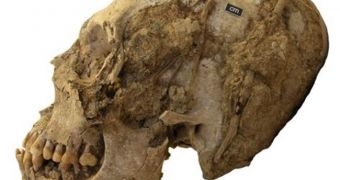Ancient Peruvians may have been a sophisticated society, possessing advanced astronomical knowledge, but like many pre-Columbian societies, such as Maya and Aztec, their power was based on the tactic of scaring their neighbors, by using cruel rites.
New archaeological finds suggest that aristocrats dismembered their less well-off neighbors as a scare tactic.
Recent diggings discovered several deformed corpses at the burial necropolis of El Trigal, a once-downtrodden settlement situated in the Nazca province (Peru) and dated to the 1st century A.D.
Researchers believe that individuals of nearby wealthier communities, sending a message about their power, could have executed the mutilations. "When a dominant class appears, [it] always seeks mechanisms to impose fear," said Pedro Castro-Martinez of the Universitat Autonoma de Barcelona (UAB). "The power of an elite is exercised and maintained by means of force and fear. Mutilations can be part of those tactics to frighten."
Tombs at the El Trigal necropolis points to a poor class, and its increasing poverty matched with the emergence - about 2,000 years ago - of the neighboring settlement of Cahuachi as a powerful conglomeration of upper-class aristocrats.
There are several outstanding bodies at El Trigal displaying signs of violence, like that of one woman who was buried with a pair of severed legs and feet not belonging to her. "The ruling members of Cahuachi's population likely used aggressive measures to force taxation and keep their Nazca rivals in check. The case of dismembered legs at El Trigal is not conclusive [of violence] due to its poor conservation," said Castro-Martinez. "But we know other cases of dismemberments, mutilations and decapitations in the Peruvian Coast of this epoch."
But one body discovered at El Trigal presented the ultimate symbol of power and wealth in ancient Peru: a grossly cone-shaped skull. "Finding conehead individuals at El Trigal-achieved by binding the skull with bandages from a young age-is a bit of a mystery, since it was a practice usually reserved for babies of wealthy lineage and El Trigal was a lower-class community," said Castro-Martinez.
"[It could be] an individual of an aristocratic lineage excluded of his/her rights, a practice of deformation independent of aristocratic lineage, or a deformation associated to certain activities for which the child was being prepared," he said.

 14 DAY TRIAL //
14 DAY TRIAL //